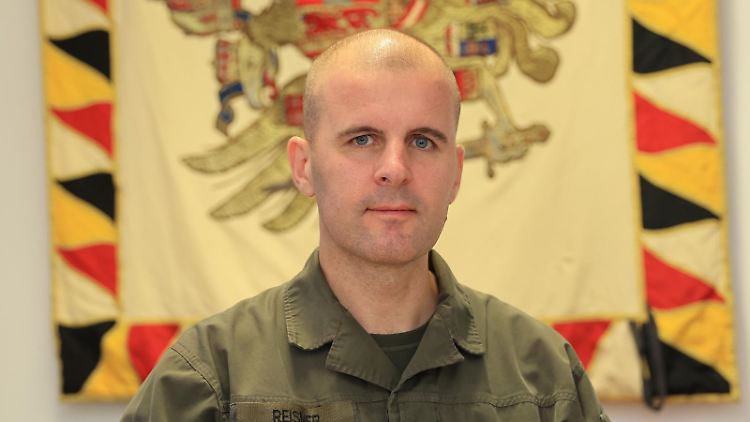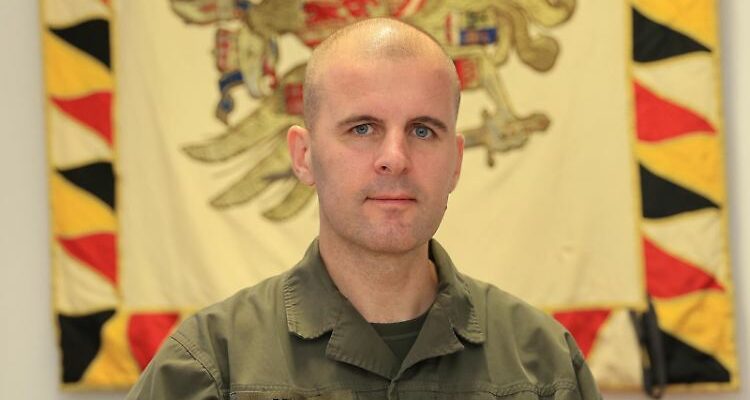After Christmas and over the New Year, Russia launched the heaviest drone and missile attacks on Ukraine since the start of the war. “From a military perspective, 2023 was a success for the Russians,” says Colonel Markus Reisner. That’s why Russia is entering the new year with new self-confidence.
ntv.de: The new year began for the people of Ukraine with a record number of 90 drone attacks in just one night, with many injured and also dead. Is this the new measure of Russian terror that Ukraine must prepare for in 2024?

Markus Reisner is a colonel in the Austrian armed forces and analyzes the war situation in Ukraine every Monday for ntv.de.
(Photo: private)
Markus Reisner: Yes, unfortunately the fears have come true that Russia’s second strategic air campaign will reach a climax, especially over Christmas and New Year. In recent weeks and months, the Russian side has tried to specifically explore the position of Ukrainian air defense systems in order to then carry out massive strikes, like last night and the attack on the night of December 29th with 158 drones and cruise missiles counted.
What is the goal of these major attacks?
Russia has three intentions. On the one hand, it is an attempt to further destroy critical infrastructure. According to Ukrainian information, Russia destroyed around 50 to 60 percent in the winter of 2022/23. The Ukrainians have repaired 10 to 15 percent, which means that around half of the critical infrastructure is still operational. The Russian side wants to destroy it. Added to this: logistics, warehouses, command structures of the Ukrainian armed forces. The second goal is to carry out terror and break the morale of Ukrainians. In December alone there were air strikes every day with two exceptions. This means that almost every night the civilian population was forced to go to the air raid shelters. This is extremely grueling.
And the third goal?
This is another military one. Russia is increasingly trying to oversaturate the anti-aircraft systems that the West has supplied. The goal behind this is to achieve constant attrition by attempting to specifically attack Patriot and IRIS-T systems. It’s all about the ammunition, that’s what’s important. If there is enough ammunition, the Ukrainian side can continue to defend itself against these attacks. But if there is nothing there, it becomes difficult. The Russians have steadily increased the number of cruise missiles and drones deployed, which shows that they have obviously managed to enormously increase military armaments capacity, especially this year.
Does air defense oversaturation mean that Ukrainian air defense is no longer sufficient? Last night 87 out of 90 drones were intercepted, which is a lot. On Friday, the air defense was unable to shoot down 44 of 158 cruise missiles and drones.
The numbers cannot be validly verified. What speaks for the Ukrainian reporting here, however, is that it admitted on Friday that it had only shot down around 75 to 80 percent of the incoming cruise missiles and drones. What we don’t know: Which targets were hit? You can see rocket impacts or falling debris in civilian residential areas. But you can see very little of military targets. To saturate air defenses, Russia is using a dangerous combination of drones and cruise missiles. First, drones are sent to supersaturate so that the air defense responds, firing their missiles or deploying the Cheetahs. Then come the cruise missiles. Since these fly quickly and close to the ground, they are only noticeable very late and can therefore often break through.
Do cruise missiles have other advantages?
They have greater impact, while drones are primarily used to terrorize and saturate anti-aircraft defenses. In addition, the Russian cruise missiles are precision weapons comparable to the Taurus or the Storm Shadow. So you have a very high accuracy. The dilemma is: If 90 of 100 incoming cruise missiles are shot down, then that is a very high rate, but the ten that penetrate cause massive destruction.
Let’s take a look at the front. How did the Ukrainian soldiers fare there in the past few days and over Christmas?
Ukraine is trying very intelligently to shift its focus away from the front and has created spectacular events that the international media immediately picked up. For example, President Zelensky’s visit to the front. The reason is that things are not going well for Ukraine there at the moment. Although there are no massive advances from the Russian side, there is steady progress. The Russians are working their way forward, meter by meter, sometimes with heavy losses. Ukraine has built several defense lines over the last eight years and the Russians managed to break through the first lines. Once they have broken through all of them, there is more or less open land behind them. This can be clearly seen in Marjinka. The city was expanded into a Ukrainian fortress for years. Nevertheless, the Russians took the city. This means that a very important fortification bulwark for Ukraine has been lost.
Ukraine is now starting to build new defenses in depth. The Russians do the same thing as last year in winter. They are trying to force Ukraine along the entire front line to use its regional tactical and operational reserves in the hope that the Ukrainians will eventually run out of these reserves and then be able to push through.
How can we summarize the year 2023?
The Russians see 2023 as a success – for several reasons: Militarily, they succeeded in taking not only Bakhmut, but also Marjinka. For us it may be an insignificant city, but it is a very important fortress for the defense of Ukraine. And the most important thing from the Russian perspective: it succeeded in repelling the Ukrainian offensive. At the beginning of the year, the mood on Russian social media was mixed because people didn’t know what would happen next. But that suddenly changed in June, when it became clear that Ukraine’s first offensive attempts had failed. From a military point of view, an absolute success for the Russian side.
What else do you consider a success?
Economically, despite twelve sanctions packages, they have managed to stabilize the Russian economy at least in the medium term and to start the military-industrial complex. They are able to produce new weapons and armaments and constantly bring them to the front. The same with new soldiers: not just reservists, but new contract servants. Russia has managed to achieve a steady supply for military purposes. The third area is diplomacy. They were able to consolidate Russia’s position in the so-called global south and even form new partnerships. New conflicts, such as those in the Gaza Strip or the attacks by the Houthis in the Red Sea, are causing increasing problems for the global north. From a Russian perspective, this is a success. This gives them self-confidence. This makes it possible for the Russian side to act accordingly in information warfare, to rally its own population behind it and to continue to attack massively. There is a celebratory mood on social networks, as if the Allied landing in Normandy had been averted in 2023.
What does this mean for 2024?
Russia enters this year with very high self-confidence and hopes to achieve decisive successes. This is exactly the culmination point we are approaching. The USA is increasingly preoccupied with other conflicts, the maritime alliance in the Red Sea, support for Israel or the issue with Taiwan. This means that the Europeans are now called upon. But here you can hardly see that the much-quoted turning point is actually being implemented. Action must be taken quickly and decisively.
Vivian Micks spoke to Markus Reisner
